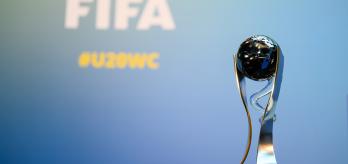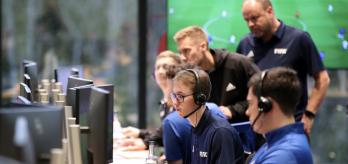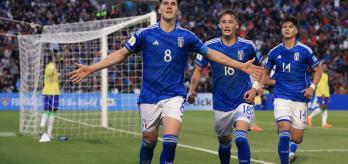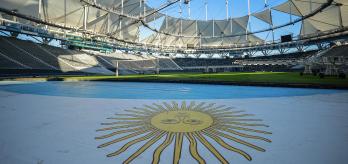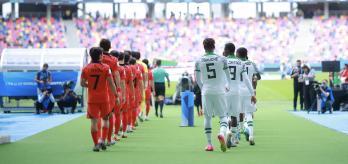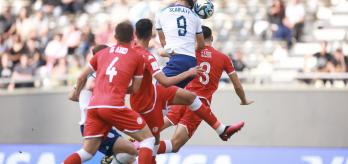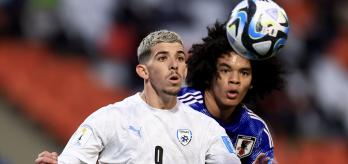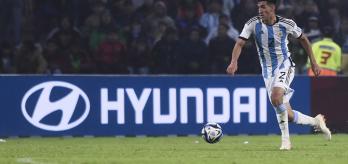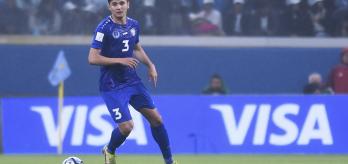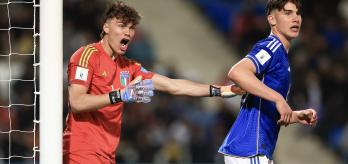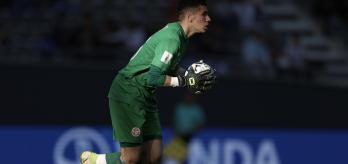Many teams have used their centre-forwards to link play and progress their team’s attack. Lee Young-jun of Korea Republic leads the rankings for this category, registering an average of 16.6 events that link play per 90 minutes.
Sekou Lega (FRA), Diego Luna (USA) and Abdulqader Ayoob (IRQ) have completed more progressive passes (a forward pass that takes their team at least 10m closer to the opponent’s goal) than any other Number 9s in the group phase (4.5, 3.8 and 3.5 respectively per 90).
In terms of time spent on the ball, Simone Pafundi (ITA), Sekou Lega (FRA) and Ali J (IRQ) all registered more time in possession than other Number 9s at the end of the group stage with 86 seconds, 80 seconds and 79 seconds per 90 minutes respectively.
As well as linking play, Pafundi (ITA), Timotej Jambor (SVK) and Souleymane Faye (SEN) have created multiple chances for their team-mates, with 2.5, 2.3 and 2.4 key passes per 90 minutes respectively.
The requirement for centre-forwards to link play as part of progressing the build-up comes down to the role they are required to play for their team, according to Jermaine Jones.
“It really depends on how the Number 9 is expected to play for their team. Are they playing the role of the false 9 or the real 9? In a 4-3-3 you want the centre-forward to occupy the opposition’s two centre-backs when they are up against a back four. If they are needed to receive the ball to feet with their back to goal in order to bring team-mates into the game, they must be capable of doing so when up against two centre-backs. They must be available to receive and protect the ball before making quick passes, and then must ensure they get into the penalty area as the ball progresses into the final third.”
For Shaun Goater, the presence of the centre-forward in these situations is vital.
“Size is important, as is physicality and strength, but what’s most important is their presence in these moments. I like to look at their body position as they receive the ball and how they use their body in anticipation of the pass they want to make. To do this, players need strength, but it really is about the timing and how the player uses their body to manipulate the ball in relation to the position of the challenging defender.”




